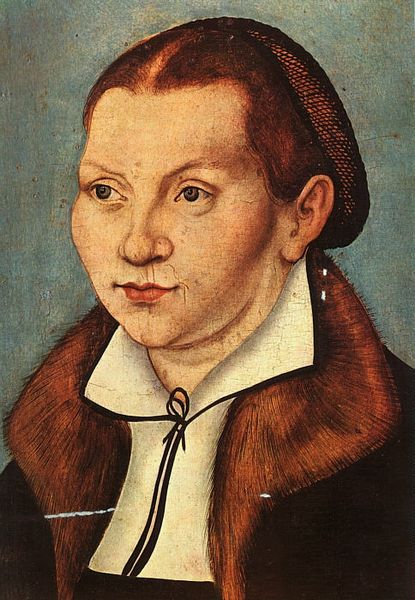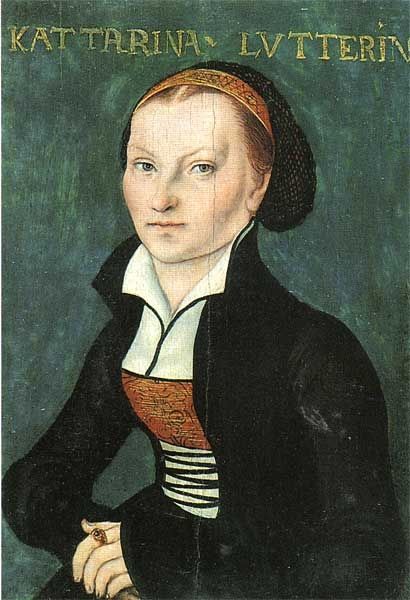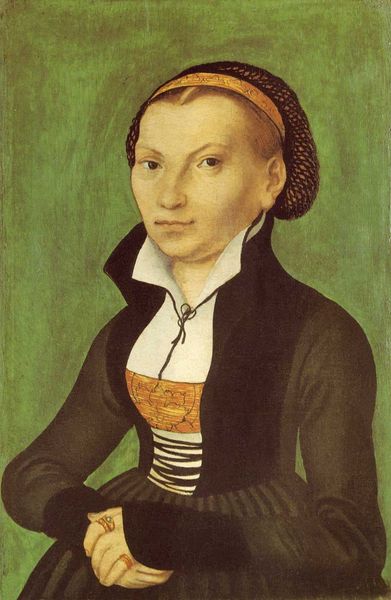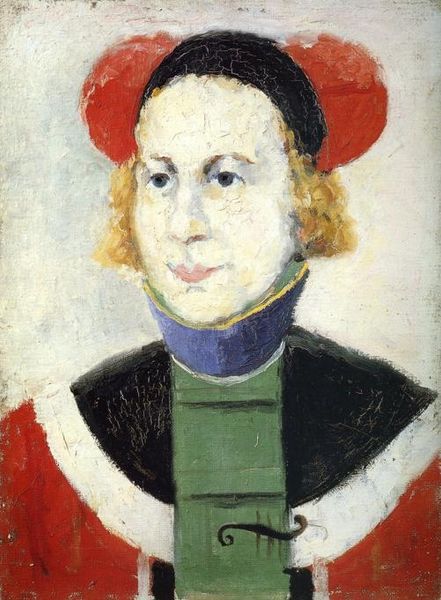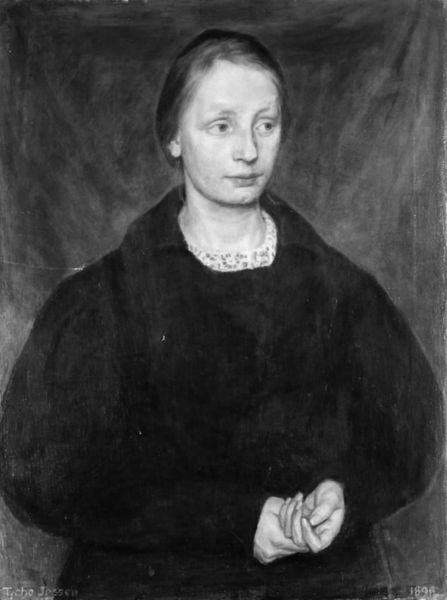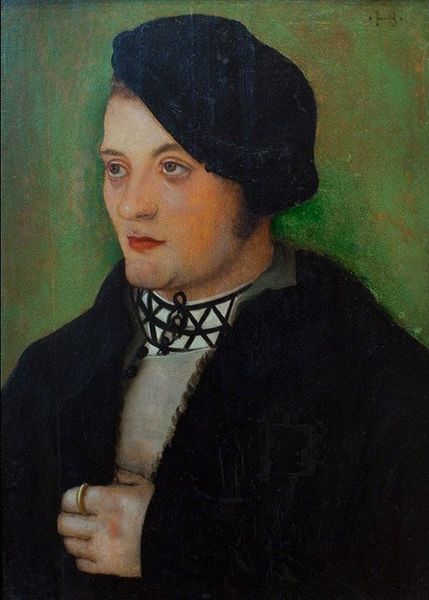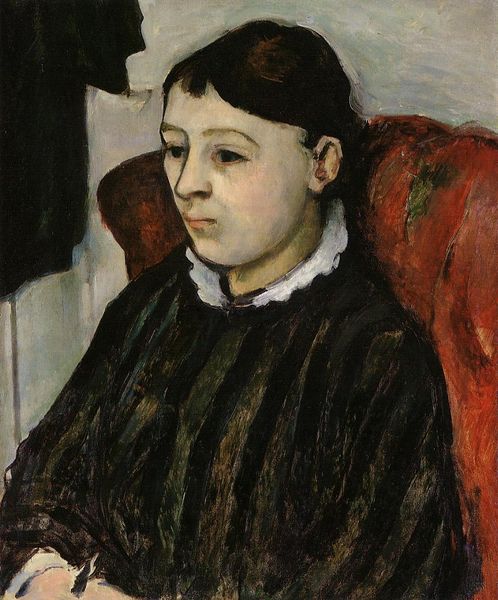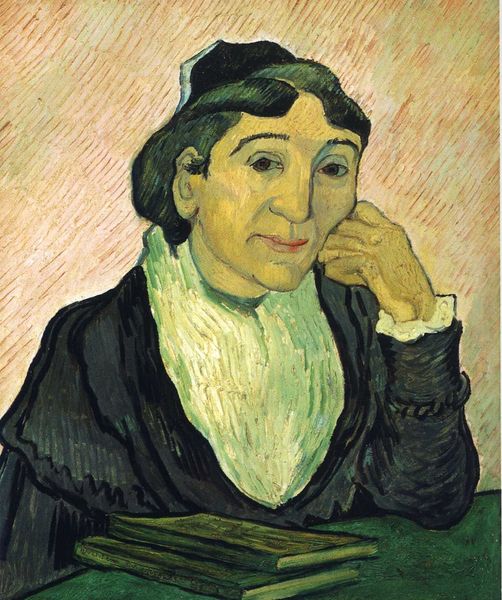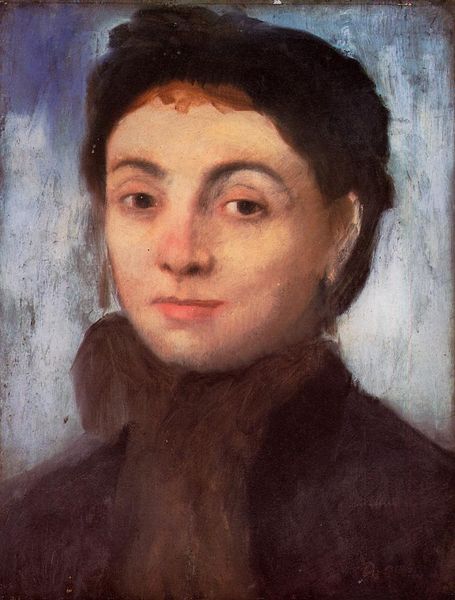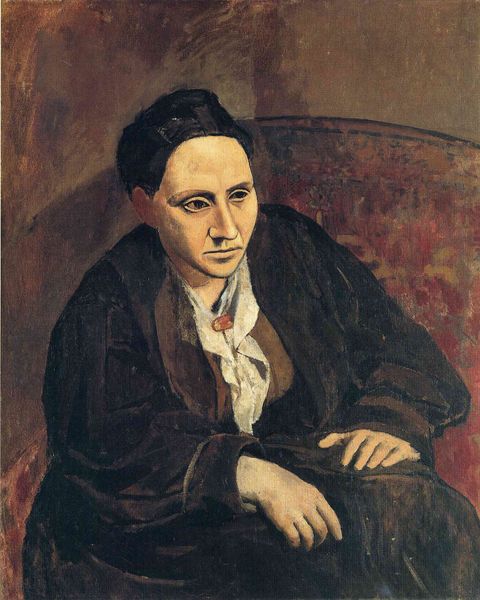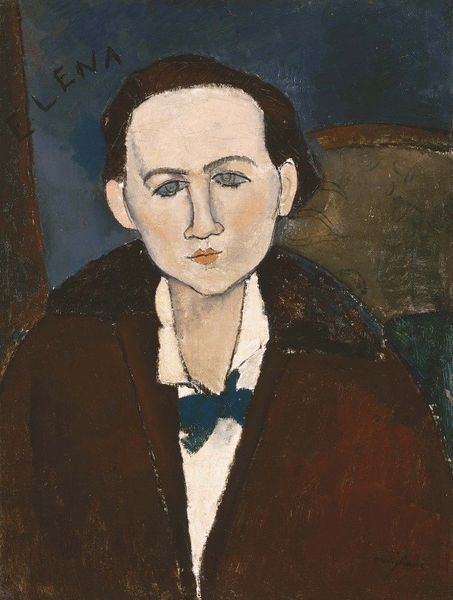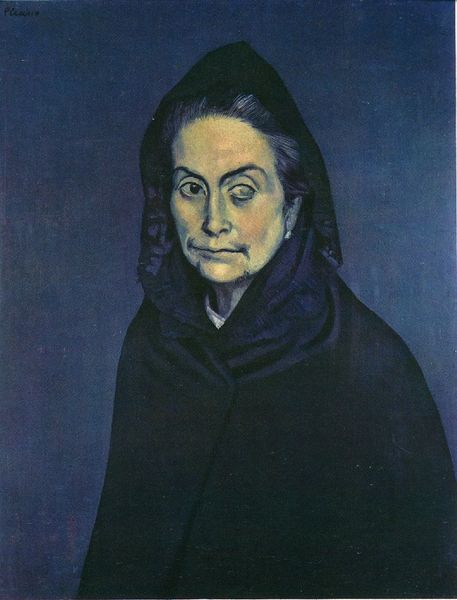
Copyright: Public domain
Curator: Before us is Lucas Cranach the Elder's "Portrait of Katharina von Bora," rendered in oil paint around 1530. What are your initial thoughts? Editor: There's a distinct formality, wouldn’t you say? The tight, controlled brushstrokes, the muted color palette, it all suggests a rather reserved composure. And look how the background blends into the clothes; there isn't a visual break for the eyes to rest. Curator: It’s interesting you focus on the limited palette, as that in itself offers us great insights. Cranach was court painter to the Electors of Saxony, which deeply informed his artistic process; the formal tone is a reflection of his need to portray Katharina within a specific social context and framework. He has situated her here as an austere and pious woman of societal importance. Editor: Do you believe that the setting and circumstance have an active impact on our reading of it? Curator: Undoubtedly. Katharina von Bora, a former nun and the wife of Martin Luther, wasn’t just anyone. Her marriage to Luther was a public act of defiance, and these portraits, and there are several that exist of both Katharina and Martin, were vital in constructing and cementing their image as leaders of the Reformation. Editor: Considering that wider implication, that background starts to feel a bit…suffocating. But returning to the formal composition of it; observe how the stark white of her collar accentuates the face. The way that ribbon sits is particularly intriguing. There’s a gentle geometry there, mirroring the sharp angle of her jawline. Curator: Indeed. Cranach’s mastery lies in these precise observations, highlighting minute but critical angles of shape to not only give structure to his pieces but also portray certain personality traits of the sitters. While formally, we’re drawn to the stark angles, we must consider how such elements give off a controlled, stoic feeling of Katharina's persona and the image she wants to portray. It lends, shall we say, an air of authority to her person. Editor: The way these structural lines interplay adds such depth to an otherwise seemingly flat rendering. I appreciate now, knowing some of its origins, how the portrait presents its subject in a poised and deliberately fashioned sense. Curator: I agree, analyzing both the historical implications and artistic approach only heightens its silent grandeur.
Comments
No comments
Be the first to comment and join the conversation on the ultimate creative platform.

